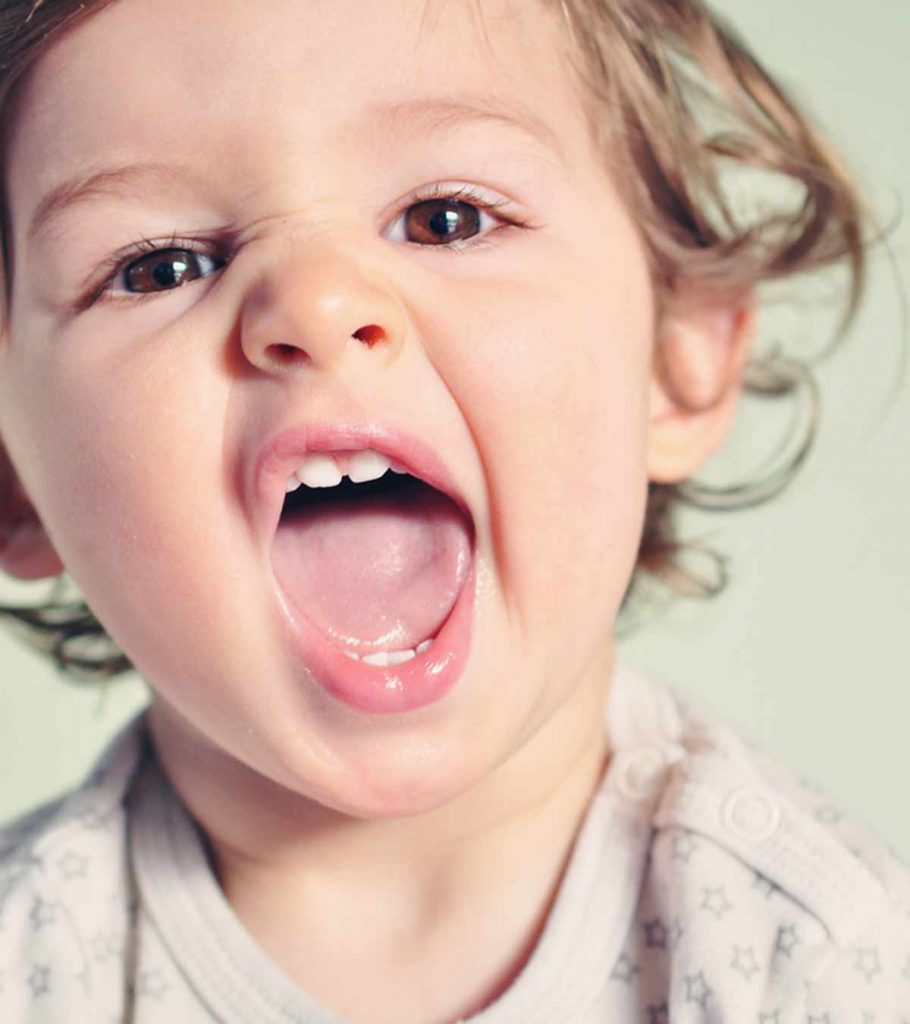Image: Shutterstock
Epstein pearls or gingival cysts are tiny, white bumps that may appear in a baby’s mouth. Alois Epstein, a physician, first described these cysts. These small cysts are usually seen on the gums or roof of the mouth.
Epstein pearls are very common in newborns. Approximately 60 to 85% of newborns may have these tiny cysts (1). Epstein pearls do not require any specific treatment; you may seek a pediatric examination to rule out other conditions that resemble Epstein pearls.
Read this post to know more about the causes, signs, symptoms, diagnosis, and treatment of Epstein pearls in newborn babies.
Causes Of Epstein Pearls In Babies
Some studies suggest that Epstein pearls occur due to epithelial cells’ entrapment during palate development (1). It means that the skin gets trapped while mouth structures are developing during the fetal period. While the jaw and the palate (roof of the mouth) fuse during the final phase of mouth development, the skin layer may get stuck and cause tiny cysts.
Epstein pearls contain keratin, a protein found in skin and mucous membranes.
Symptoms And Signs Of Epstein Pearls In Babies
Epstein pearls appear as whitish-yellow bumps or nodules. A cyst can be one to three millimeters in size and is usually seen on the gums and roof of the oral cavity (1). You may notice a cluster of small bumps than a single bump in most cases.
They do not cause any specific symptoms, such as fever and swelling. Although Epstein pearl may resemble an emerging tooth, the cyst does not cause pain or other teething signs.
Seek medical care if bumps do not disappear within a few weeks, bleed, or grow large in size. You may also consult a pediatrician if the baby shows signs of pain, such as refusing to feed or crying.
Are Epstein Pearls In Newborns Dangerous?
Epstein pearls are not dangerous or painful. They are benign and go away in one to two weeks (2). Cysts may often break due to friction from breastfeeding, feeding bottles, or pacifiers.
Popping or squeezing cysts may result in bacterial infections and increase the risk of complications, such as sepsis.
Usually, these are self-resolving cysts that go away without leaving any scars. It is rare to find Epstein pearls in babies older than three months. However, the cystic epithelium may remain in adult gingiva in some cases.
Diagnosis Of Epstein Pearls In Babies
A pediatrician can diagnose Epstein pearls during an oral physical examination. Laboratory examinations and imaging tests are usually not required.
An expert’s evaluation can help rule out conditions that could mimic Epstein pearls, such as oral thrush, milia, Bohn nodules (mucosal gland cysts), dental lamina, and natal teeth (teeth present at birth).
Natal teeth may irritate the baby while nursing, and some infants may accidentally swallow a fallen natal tooth. Therefore, if you notice a cyst in a baby’s mouth, consult a pediatrician to rule out the possibility of other conditions, which may cause complications.
Treatment Of Epstein Pearls In Babies
Epstein pearls may not require specific treatment and usually disappear within a few weeks (3). They may dissolve due to friction with the nipples while breastfeeding or drinking from a bottle.
The use of pacifiers and chewing toys may also break the Epstein pearls and gradually dissolve the bump. However, it is not recommended to squeeze or pop the Epstein pearls using fingers or any other instrument.
Epstein pearls are painless and quite common among infants. As the baby grows older, the cyst would gradually disappear without leaving any mark.
If you have concerns regarding the size or appearance of an Epstein pearl, or if it interferes with feeding, consult a doctor.
References:
2. Epstein pearls; University of Illinois at Urbana-Champaign
3. Epstein Pearls; MedlinePlus; United States National Library of Medicine
